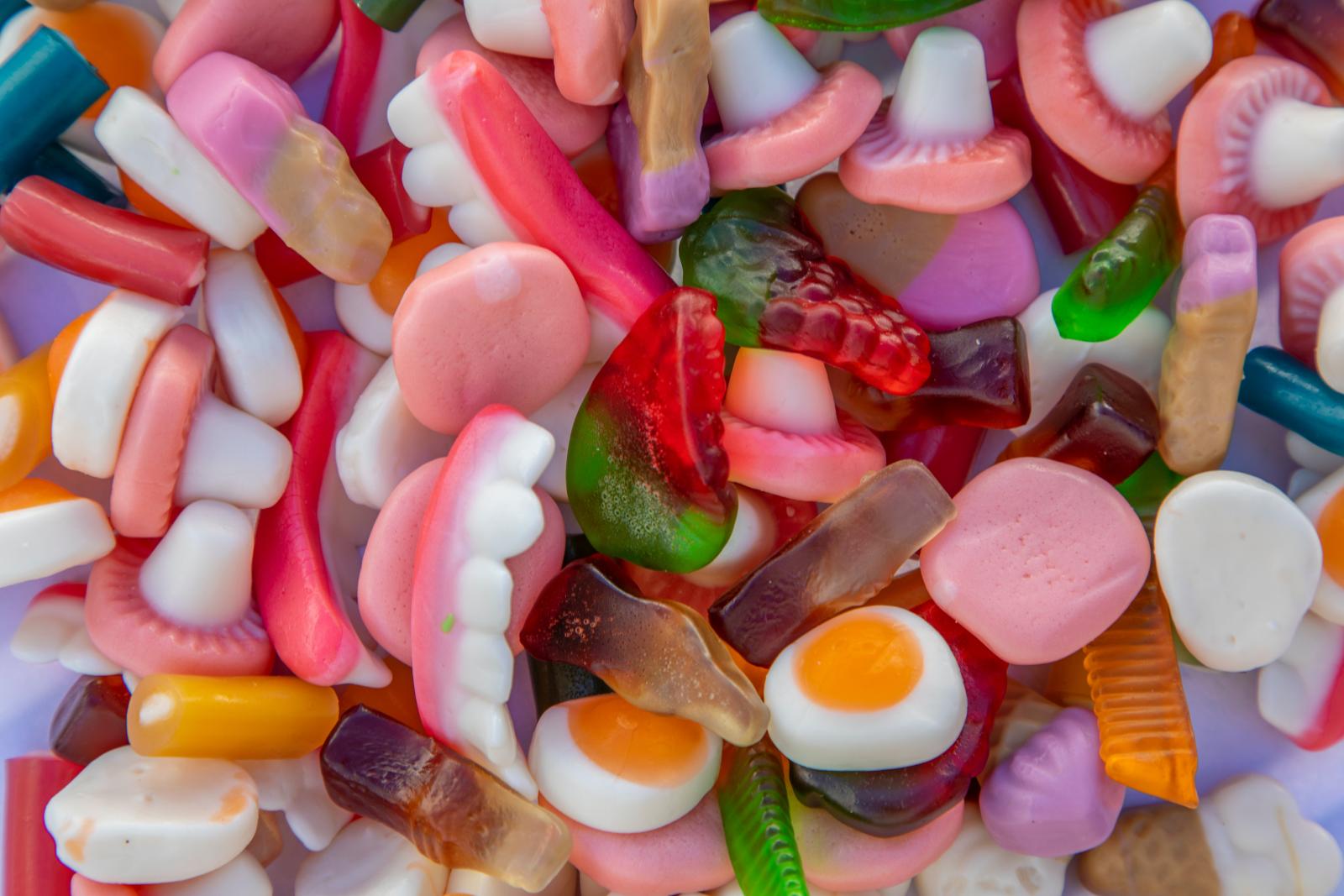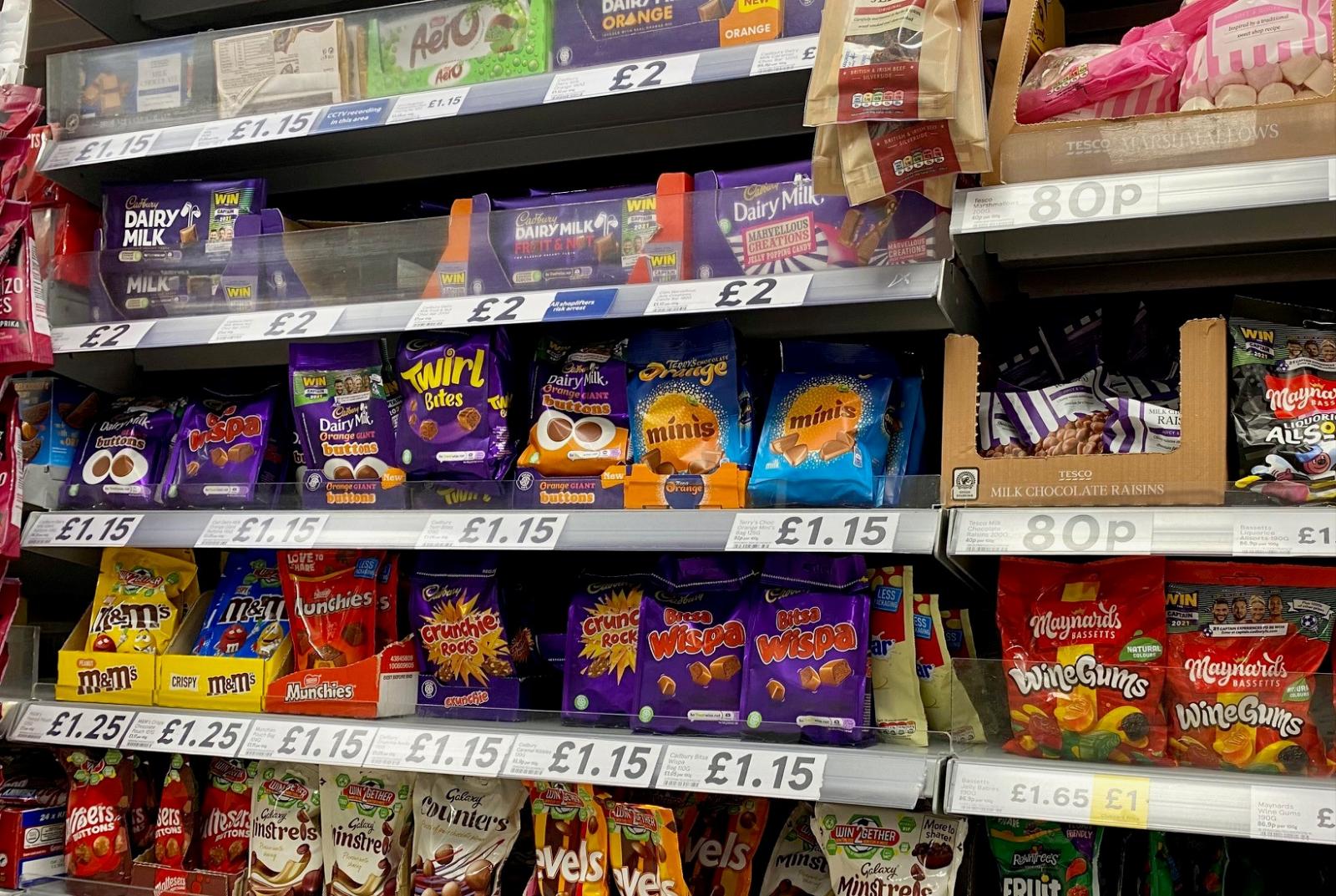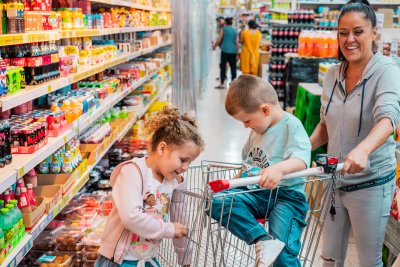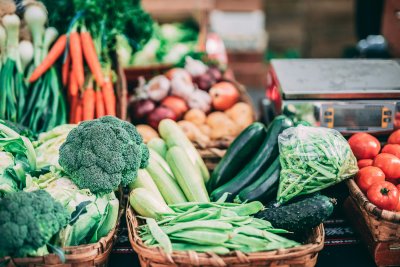Blogs • Children's Food Campaign
Is it time for a new junk food tax?
Following the success of the Soft Drinks Industry Levy, debate is growing over the power of fiscal measures to shift the manufacture, sale and consumption of other food and drink categories towards healthier options, as part of future Obesity Strategy and forthcoming National Food Strategy. Children’s Food Campaign Co-ordinator Barbara Crowther argues that the sugar, salt and saturated fats in snacks such as crisps and confectionery should be firmly in the government's sights for the future.

There’s no doubt that the Soft Drinks Industry Levy (SDIL) has succeeded in removing millions of tonnes of sugar from UK diets. Even the threat of its introduction led to rapid reformulation by many manufacturers, so that by the time it came into force in April 2018, around 37% of soft drinks had already changed in order to escape the levy.
In fact, soft drinks contained a whopping 43.7 MILLION fewer kilograms of sugar in 2019 than they did in 2015, according to the most recent Public Health England sugar reduction report. In retail and manufactured drinks, sugar has reduced by almost 44%. Independent researchers working on the evaluation of the SDIL have also now reported that average household purchases and consumption of soft drinks have also fallen by the equivalent of 30g of sugar per week[i]. equivalent to each person replacing a 250ml drink every week with a sugar free alternative.
By contrast, according to the latest Public Health England (PHE) reports, the voluntary sugar reduction programme has only delivered a 3% reduction in sugar levels in cakes and biscuits, whilst the levels of sugar in confectionery and sweets have even increased in the past three years[ii]. PHE will be producing its final report on the voluntary sugar reduction programme later this year.
Beyond soft drinks
As Richard Murray, chief executive of the King’s Fund says,
“The sugar tax was an innovation – it worked well. You’ve just got to do a lot more of it, and that could include controlling, through taxation, the calorific content of food and the quality of the food itself. So a tax could be levied on saturated fat or calories.”[iii]
A growing range of high-profile public health and food figures have voiced similar positions in recent years. They include National Food Strategy tsar Henry Dimbleby, former Chief Medical Officer Dame Sally Davies and former NHS head Simon Stephens. Suggestions have included reforming VAT, which “has no real logical basis, either in terms of public health policy or simply on the principles of tax design” according to Martin O’Connell at the Institute for Fiscal Studies to further extension of the SDIL itself to include milkshakes, as proposed by the Health Select Committee’s 2018 enquiry into Childhood Obesity[iv]. Even the threat of this latter idea has prompted an acceleration of reformulation, resulting in HM Treasury deciding in March 2021 to delay their formal review until 2023. Meanwhile, as part of a pitch to make “a giant leap on childhood health”, the Institute for Public Policy Research (IPPR) has proposed taxing non-essential items with a calorie density greater than 275kcal per 100g, using the tax revenue to fund a healthy food incentive scheme[v].
So how do we take this learning into the future? Children’s Food Campaign has been looking at food consumption trends, at the categories contributing the next highest levels of sugar and saturated fat in children’s diets, whilst contributing the least in terms of overall nutrition, and at the various options for applying further fiscal measures. And increasingly, addressing the levels of fat, sugar and salt consumed every day through snacking feels like an obvious area to be addressed. And not just because a tax on snacks has a quite pleasing rhyme.
We’re snacking a whole lot more than before
Whilst the sugar in our soft drinks is taxed, the sugar in our sweets, chocolate, biscuits and cakes is not. Snacking trends were already on the increase long before the Covid-19 pandemic arrived on the scene, but the last 12 months have also seen a dramatic increase in their purchase and consumption. The Grocer reported that biscuit sales increased 21% with healthier brands becoming unpopular and experiencing a decline of 5-8%. Chocolate sales increased by more than 25%, and crisp sales went up 21% during lockdown. A PHE survey of over 5,000 adults in England reported that 35% reported snacking on unhealthy food and drink at least once a day, up from 26% in the previous 12 months. Economic recession also tends to increase sales of low price snacks as people look for cheaper ways to treat themselves, as seen in 2008. Children’s Food Campaign research with members of our Parents’ Jury in 2020 also reported an increase in snacking by their children during lockdown, where snacks were offered as treats or rewards for good behaviour during lockdown, or just to mitigate boredom and improve children’s moods. Manufacturers and retailers are playing into these trends by repackaging and marketing treats for breakfast, for lunchboxes, for eating on the go. Instead of packing carrot sticks or fresh fruit, parents of young children are increasingly bombarded by an array of ultra-processed on-the-go snacking options. And little labels on chocolate saying “Be Treatwise” go unnoticed as sharing bags, family sizes and multipacks lure us away from individual bars and portions to eat far more of them than we should.
There is no doubt – as a nation, we’re snacking more, and what once were occasional treats are now part of the daily diet.

The case for a tax on snacks
Their influence on our intakes. The National Diet and Nutrition Survey shows that sugary snacks such as biscuits, buns, cakes, pastries, sugar and chocolate confectionery contribute to 31% of free sugar intake in children aged 4-15. Three quarters of sweet snacks advertised as being “healthy” due to presence of proteins, fibre or fruit still have high sugar content.
Failure of self regulation. Voluntary sugar and calorie reduction programmes have signally failed in these categories to date, and the sugar reduction programme is due to make its final report later in 2021. By contrast with the 44% reduction in sugar in soft drinks since 2015, PHE’s Sugar Reduction Progress Report reveals that on average, chocolate and sweet confectionery have increased their sugar content by 10% and their sales have increased, resulting in an overall rise of sugar consumption[vi].
Building back a healthier economy. It’s no surprise that the focus is now moving to more impactful solutions, and learning the lessons from the Soft Drinks Industry Levy to move forward in shifting the dial back towards healthier food and drink. Most tellingly, a modelling study in 2019 found that a fiscal measure delivering a 20% price increase to high sugar snacks (eg. confectionery, cakes and biscuits) could support a reduction in UK prevalence of obesity by 2.7%, with the largest effects seen in the lower income households with highest levels of overweight[vii]. Maybe it's time to revive this idea.
Expanding new fiscal measures to categories of snacks that contain high levels of sugar, salt or saturated fats, whilst contributing very little to overall nutritional intake, could have the potential to incentivize innovation in manufacturing, as well as raising significantly higher levels of revenue than the modest £340m per year currently being raised by the sugary drinks tax.
At a time the Government is needing to make critical investments in shoring up our National Health Service, or tackling health inequalities, expanding school food and healthy eating programmes or catch up initiatives for children, such revenue could be well directed towards building back healthier as part of Covid recovery.
How could it be done?
Whereas for soft drinks, manufacturers have been able to swap out sugar for alternative low or no calorie sweetening options, the recipes for confectionery, cakes, biscuits or other snacks are more complex, and focusing on one nutrient could have unintended consequences in terms of increasing other ingredients, and not result in an overall healthier product. Talking to a range of health organisations, nutritionists and academics working on this topic, there is a good deal of consensus that the next stage for fiscal measures needs to take more of a holistic approach, for example by considering energy density or overall nutritional scorings, or tackling salt and saturated fat levels, not just sugar.
The current Nutrient Profile Model currently in use to define HFSS products for advertising and marketing purposes takes exactly this approach – it calculates the values per 100g of the sugar, salt and saturated fats, and allows these to be balanced against the healthier nutrients: fibre and protein. The advantage of this evidence-based model is that it is already understood by most manufacturers and retailers in the food and drink sector, and is being used by Government to extend to restrictions on locations and price promotions too, for selected food and drink categories.
One option might be apply this model to other food and drink categories, and either tax those falling into the HFSS category, or even just on the basis of the final points score - the higher the points, the higher the tax. Snacks - the non-essential or discretionary products that contribute a lot of sugar, saturated fat, salt and excess calories, but very little nutritional value - might be a place to trial such an approach. Linking a tax to nutritional content would at least create some commercial incentive towards healthier production and sales.
However, applying Nutritional Profile scorings to a tax model may also be unpopular in terms of adding a layer of additional calculation to fiscal liabilities for companies, and also in terms of the exact definitions of product categories to include or not include.
An alternative model might address the cost of the actual ingredients for any company buying them for use in manufacture of food and drink items. This would have the advantage of being potentially applicable across a much larger proportion of food and drink. It could include not just to companies retailing packaged goods but also loose produce (such as bakery items), and the sugar, salt and fats (such as palm or vegetable oil) purchased for catering establishments too. This could potentially create huge new revenues at a time the Government needs to invest in public services, especially if revenue were hypothecated to tackle health inequalities, such as boosting fruit and vegetable schemes or expanding healthy school food innovation. Such an approach would circumvent the need to calculate and define which end products are in scope of the tax or not, and the complexities of Nutrient Profile Model scoring, as whatever product the sugar, salt or fat is being purchased upstream for the production of food and drink, the tax applies. The challenge will be to determine the levy rates at a level that results in behaviour change, and determine who is liable for paying. One risk might be that retailers and end catering users expect their own suppliers to absorb the levy cost, rather than this being passed through the supply chain into the final price to the consumer. Contraversially, the Department for International Trade has also just delivered a huge curveball to any strategy to make sugar more expensive for manufacturers by signing a deal with Australia that actually removes tariffs and quotas on sugar, whilst extolling the prospect of cheaper Tim Tams and Penguin biscuits for all. A cross-Governmental approach on both obesity and trade is needed now more than ever. But perhaps the snacks sector could be a good place to at least trial such an upstream levy approach, just as the soft drinks industry has spearheaded the idea of a sugar tax to date.
Case Study: Hungary’s Public Health Product Tax
Hungary has already moved forward with a tax on products that exceed the threshold level of salt, sugar, caffeine or other ingredients of concern to nutritionists such as methylxanthine and taurine (energy drinks high in sugar already fall into our Soft Drinks Industry Levy, but low sugar drinks with taurine do not). The Public Health Product Tax (PHPT) applies to pre-packaged sweetened products, soft drinks with added sugar, fruit jams and sweetened preserves, aromatised beer with added sugar, alcoholic beverages, energy drinks, and salty snacks, and was modified five times in order to make adjustments and close loopholes leading to tax evasion. It resulted in product reformulation, and prices of products increased, manufacturing of them decreased and also a reduction in consumption of less healthy products that was being sustained three years after its introduction. The revenues generated from the PHPT were hypothecated to give frontline healthworkers a pay rise – something that our Government is currently arguing they cannot afford for our NHS nurses.
The three Rs – reformulation, retail shifts and revenues?
The Soft Drinks Industry Levy’s primary effect has been via reformulation of products and in encouraging companies to shift the emphasis of their product ranges towards healthier options. Given the complexities of reformulating recipes for cakes, chocolate and other items, it would be worth some industry modelling to see what effect a tax on the sugar, salt or fat in our snacks may have on product formulation and it is possible that a levy may also trigger other business shifts in terms of shifting product portfolios towards healthier options, retailer listings and marketing and promotion investments for products incurring a higher rate of tax.
Another way to trigger change is simply by making these products more expensive to produce, sell and purchase. Setting a levy rate at a level that manufacturers and retailers need to pass the cost on to consumers in the price paid in the store could also have an impact, as was seen in Hungary. The modelling done suggest that an increase of around 20% in retail pricing might be required to trigger the necessary reduction in consumption that could create a significant contribution to the Government’s target of halving child obesity by 2030. Setting a tax rate at a level that results in price increases on shelf could generate significant revenues and as well as even more powerful incentives to the industry to shift towards healthier food options.
Sustain’s deputy CEO Ben Reynolds questions whether products in these categories can really be reformulated, or whether a blanket category tax and resulting increase in prices would send a clearer message to influence public atttitudes and purchasing behaviour.
“Is there such thing as a healthy snack, or is the problem really the volume and regularity of (largely ultra-processed) snacks consumed? Something that a rise in prices would theoretically reduce, which speaks to the idea that these treats should go back to being treats rather than perceived as staples.”
At a time that the Government urgently needs to shore up investment in public health and ‘build back better’ to recover from the Covid-19 emergency, a measure that creates a win-win for both a healthy weight strategy and revenues for the Exchequer certainly seems timely. If nothing else, the principle of “polluter pays” applies – that those manufacturing and profiting from sales of products that contribute disproportionately to an unhealthy food culture should be required to contribute more towards interventions that help to prevent, mitigate and treat the outcomes.
What Next?
The National Food Strategy is due to report in July, and further fiscal incentives to create a healthier food industry and culture are rumoured to be in the mix of possible policy recommendations to expect. Children’s Food Campaign believes that the snacking industry should be firmly within the sights of such measures, however they are applied. In the way that the Soft Drinks Industry Levy was only the curtain raiser for a sugar tax, the next act must also have confectionery, sweets, crisps and cakes in its sights, whether that is a tax on the category, or a progressive approach to the amounts of fat, sugar or salt they typically contain.
Thanks to support from Impact on Urban Health, Children's Food Campaign is currently investigating what more could be done to advocate around the potential scope, application and impact of further fiscal measures for improving our food and health landscape. We await with interest the forthcoming recommendations from the National Food Strategy, and would be interested to explore further with other organisations, academic institutions and policy makers.
Do get in touch to share your views, ideas and suggestions! Email: Barbara@sustainweb.org
[i] Changes in soft drinks purchased by British households associated with the UK soft drinks industry levy: controlled interrupted time series analysis BMJ 2021;372:n254http://dx.doi.org/10.1136/bmj.n254
[ii] https://www.gov.uk/government/news/third-year-of-industry-progress-to-reduce-sugar-published
[iii] https://www.theguardian.com/society/2020/jul/19/junk-food-is-the-new-tobacco-experts-call-for-restrictions-to-tackle-obesity
[iv] https://publications.parliament.uk/pa/cm201719/cmselect/cmhealth/882/882.pdf
[vi] https://assets.publishing.service.gov.uk/government/uploads/system/uploads/attachment_data/file/925027/SugarReportY3.pdf
[vii] Scheelbeek PFD, Cornelsen L, Marteau TM, Jebb SA, Smith RD (2019). Potential impact on prevalence of obesity in the UK of a 20% price increase in high sugar snacks: modelling study. BMJ 366:4786 https://www.bmj.com/content/366/bmj.l4786
[viii] WHO. Public Health Product Tax in Hungary: an example of successful intersectoral action using a fiscal tool to promote healthier food choices and raise revenues for public health https://www.euro.who.int/__data/assets/pdf_file/0004/287095/Good-practice-brief-public-health-product-tax-in-hungary.pdf
Published Tuesday 13 July 2021
Children's Food Campaign: Better food and food teaching for children in schools, and protection of children from junk food marketing are the aims of Sustain's high-profile Children's Food Campaign. We also want clear food labelling that can be understood by everyone, including children.





